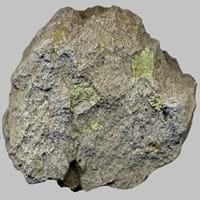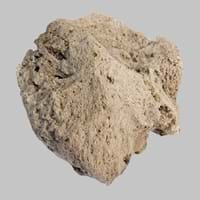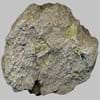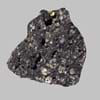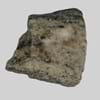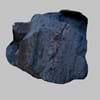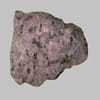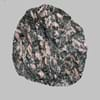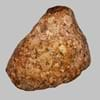Definition
Minette is a variety of Lamprophyre and is porphyritic alkaline igneous rock which is mainly dominated by biotite and potassic feldspar
Pumice is a volcanic rock that consists of highly vesicular rough textured volcanic glass, which may or may not contain crystals
Discoverer
Unknown
Unknown
Etymology
From French mine ore, mine + ette
From Old French pomis, from a Latin dialect variant of pumex
Class
Igneous Rocks
Igneous Rocks
Sub-Class
Durable Rock, Medium Hardness Rock
Durable Rock, Medium Hardness Rock
Other Categories
Coarse Grained Rock, Fine Grained Rock, Opaque Rock
Fine Grained Rock, Opaque Rock
Texture
Porphyritic
Vesicular
Color
Black, Bluish - Grey, Brown, Dark Greenish - Grey, Green, Grey
Beige, Colourless, Grey, Light Green, Light Grey, Pink, White, Yellow- grey
Durability
Durable
Durable
Scratch Resistant
Yes
Yes
Appearance
Dull, Banded and Foilated
Vesicular
Interior Uses
Countertops, Decorative Aggregates, Interior Decoration
Decorative Aggregates, Flooring, Homes, Interior Decoration
Exterior Uses
As Building Stone, As Facing Stone, Garden Decoration
As Building Stone, As Facing Stone, Garden Decoration, Paving Stone
Other Architectural Uses
Curbing
Curbing, Powder
Construction Industry
As Dimension Stone, Cement Manufacture, for Road Aggregate, Making natural cement, Manufacture of Magnesium and Dolomite Refractories
As Dimension Stone, Cement Manufacture, for Road Aggregate, In landscaping and horticulture, Making natural cement, Production of lightweight concrete blocks
Medical Industry
Taken as a Supplement for Calcium or Magnesium
As an abrasive in skin exfoliating products, In Chemical and Pharmaceutical Industry, Medicines and Cosmetics
Antiquity Uses
Artifacts, Monuments, Sculpture, Small Figurines
Artifacts
Commercial Uses
An Oil and Gas Reservoir, As a Feed Additive for Livestock, Gemstone, Metallurgical Flux, Production of Lime, Soil Conditioner, Source of Magnesia (MgO)
As a traction material on snow-covered roads, As an abrasive in pencil erasers, Fine abrasive used for polishing, Manufacture of Soap, Solvents, Dyes, Plastics and Fibres, Used in aquariums
Types
Minette, Alnoite, Camptonite, Monchiquite, Fourchite, Vogesite, Appinite and Spessartite
Scoria
Features
Always found as volcanic pipes over deep continental crust, Host rock for Diamond, Is one of the oldest rock, Surfaces are often shiny
Host Rock for Lead
Archaeological Significance
Monuments
Used
Not Yet Used
Famous Monuments
Data Not Available
Not Applicable
Sculpture
Used
Not Yet Used
Famous Sculptures
Data Not Available
Not Applicable
Figurines
Used
Not Yet Used
Formation
Minette formation takes place deep beneath the Earth’s surface at around 150 to 450 kms, and are erupted rapidly and violently.
Pumice rock forms when the magma cools so quickly that atoms in the melt are not able to arrange themselves into a crystalline structure.
Mineral Content
Amphibole, Carbonate, Garnet, Micas, Olivine, Phlogopite, Pyroxene
Aluminum Oxides, Calcite, Carbonate, Iron Oxides, Silica
Compound Content
Aluminium Oxide, NaCl, CaO, Iron(III) Oxide, FeO, Potassium Oxide, MgO, MnO, Sodium Oxide, Silicon Dioxide, Titanium Dioxide
Al, Aluminium Oxide, CaO, Carbon Dioxide, MgO, Silicon Dioxide
Types of Metamorphism
Burial Metamorphism, Cataclastic Metamorphism, Contact Metamorphism, Hydrothermal Metamorphism, Impact Metamorphism, Regional Metamorphism
Burial Metamorphism, Impact Metamorphism
Types of Weathering
Biological Weathering, Chemical Weathering
Biological Weathering, Chemical Weathering, Mechanical Weathering
Types of Erosion
Chemical Erosion, Coastal Erosion, Sea Erosion, Wind Erosion
Chemical Erosion, Coastal Erosion, Glacier Erosion, Sea Erosion, Water Erosion, Wind Erosion
Grain Size
Fine to Coarse Grained
Fine Grained
Fracture
Conchoidal
Planar
Streak
White
White, Greenish White or Grey
Porosity
Very Less Porous
Highly Porous
Luster
Subvitreous to Dull
Earthy
Compressive Strength
Not Available
Cleavage
Conchoidal
Perfect
Toughness
Not Available
3
Specific Gravity
2.86-2.87
2.86
Transparency
Translucent to Opaque
Opaque
Density
2.95-2.96 g/cm3
0.25-0.3 g/cm3
Specific Heat Capacity
Not Available
Resistance
Heat Resistant, Impact Resistant
Impact Resistant, Pressure Resistant
Deposits in Eastern Continents
Asia
Russia
Afghanistan, Indonesia, Japan, Russia
Africa
Angola, Botswana, Cameroon, Ethiopia, South Africa
Ethiopia, Kenya, Tanzania
Europe
England, Hungary, Iceland, United Kingdom
Greece, Hungary, Iceland, Italy, Turkey
Others
Antarctica, Greenland
Not Yet Found
Deposits in Western Continents
North America
Canada, Mexico, USA
Bahamas, Barbados, Canada, Costa Rica, Cuba, Jamaica, Mexico, USA
South America
Argentina, Colombia, Ecuador
Argentina, Chile, Ecuador, Peru
Deposits in Oceania Continent
Australia
New South Wales, New Zealand, Queensland, South Australia, Western Australia
New Zealand, Western Australia
All about Minette and Pumice Properties
Know all about Minette and Pumice properties here. All properties of rocks are important as they define the type of rock and its application. Minette and Pumice belong to Igneous Rocks.Texture of Minette is Porphyritic whereas that of Pumice is Vesicular. Minette appears Dull, Banded and Foilated and Pumice appears Vesicular. The luster of Minette is subvitreous to dull while that of Pumice is earthy. Minette is available in black, bluish - grey, brown, dark greenish - grey, green, grey colors whereas Pumice is available in beige, colourless, grey, light green, light grey, pink, white, yellow- grey colors. The commercial uses of Minette are an oil and gas reservoir, as a feed additive for livestock, gemstone, metallurgical flux, production of lime, soil conditioner, source of magnesia (mgo) and that of Pumice are as a traction material on snow-covered roads, as an abrasive in pencil erasers, fine abrasive used for polishing, manufacture of soap, solvents, dyes, plastics and fibres, used in aquariums.
